4.0 创建 cate 分支
运行如下的命令,基于 master 分支在本地创建 cate 子分支,用来开发分类页面相关的功能:
git checkout -b cate
创建编译模式
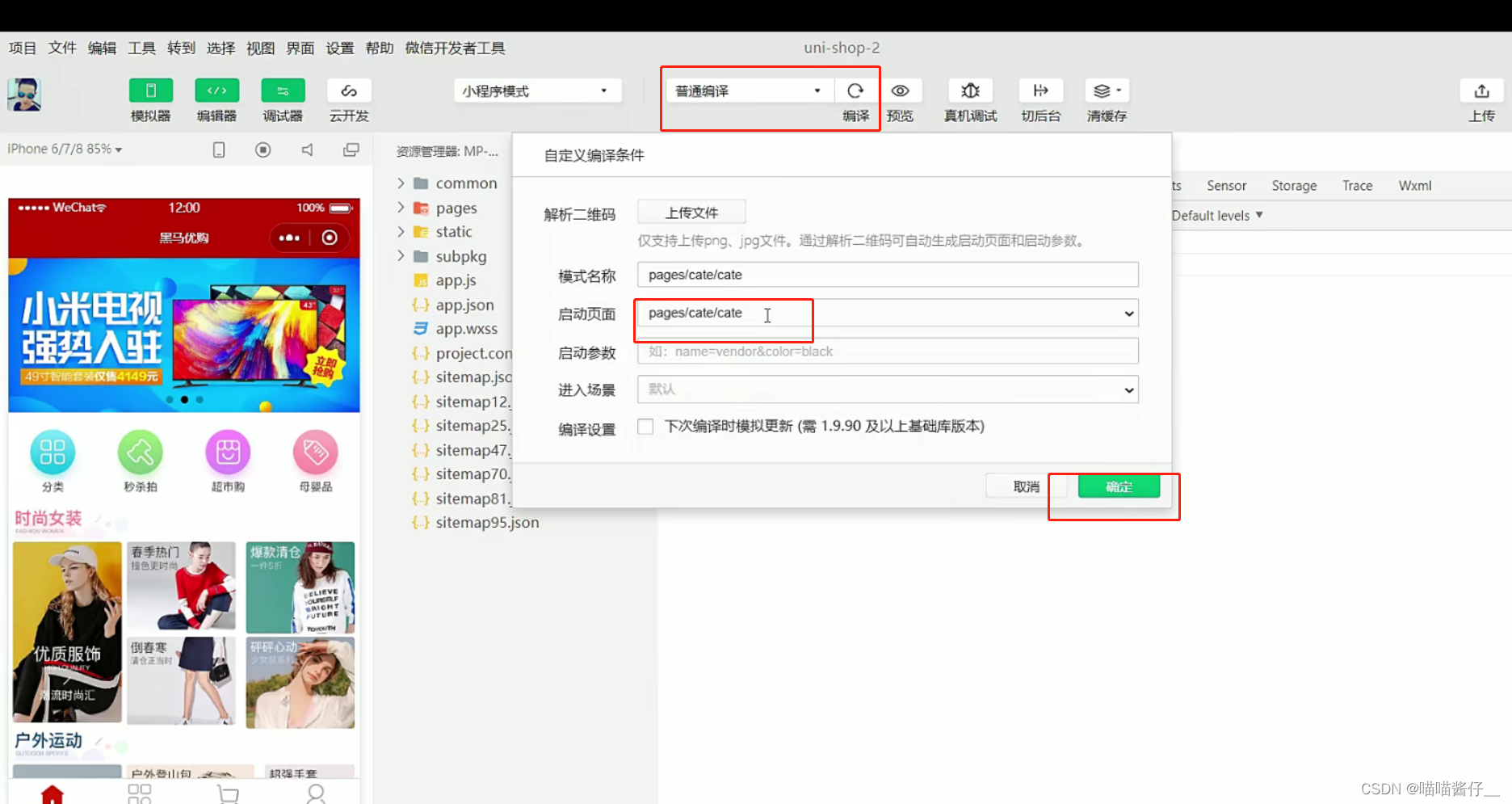
#4.1 渲染分类页面的基本结构
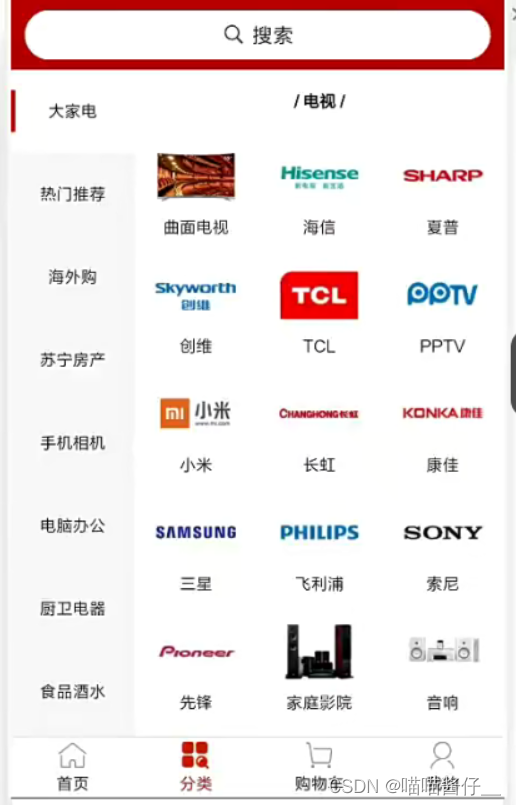
分析
1 编写
1 纵向的 只需要添加 scroll-y :style="{height: wh + 'px'}"希望宽度固定或者高度固定,就用px
2 scroll-y="true" 允许纵向滚动
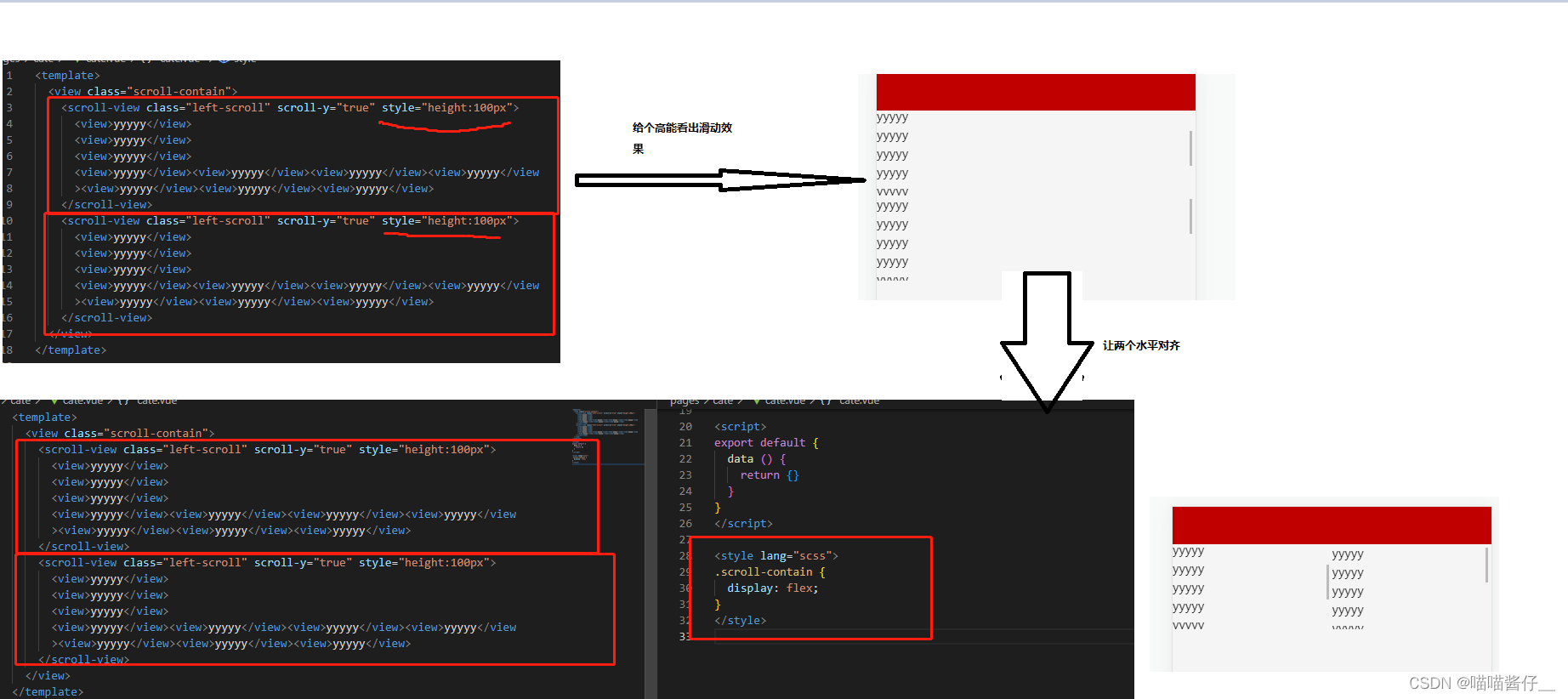
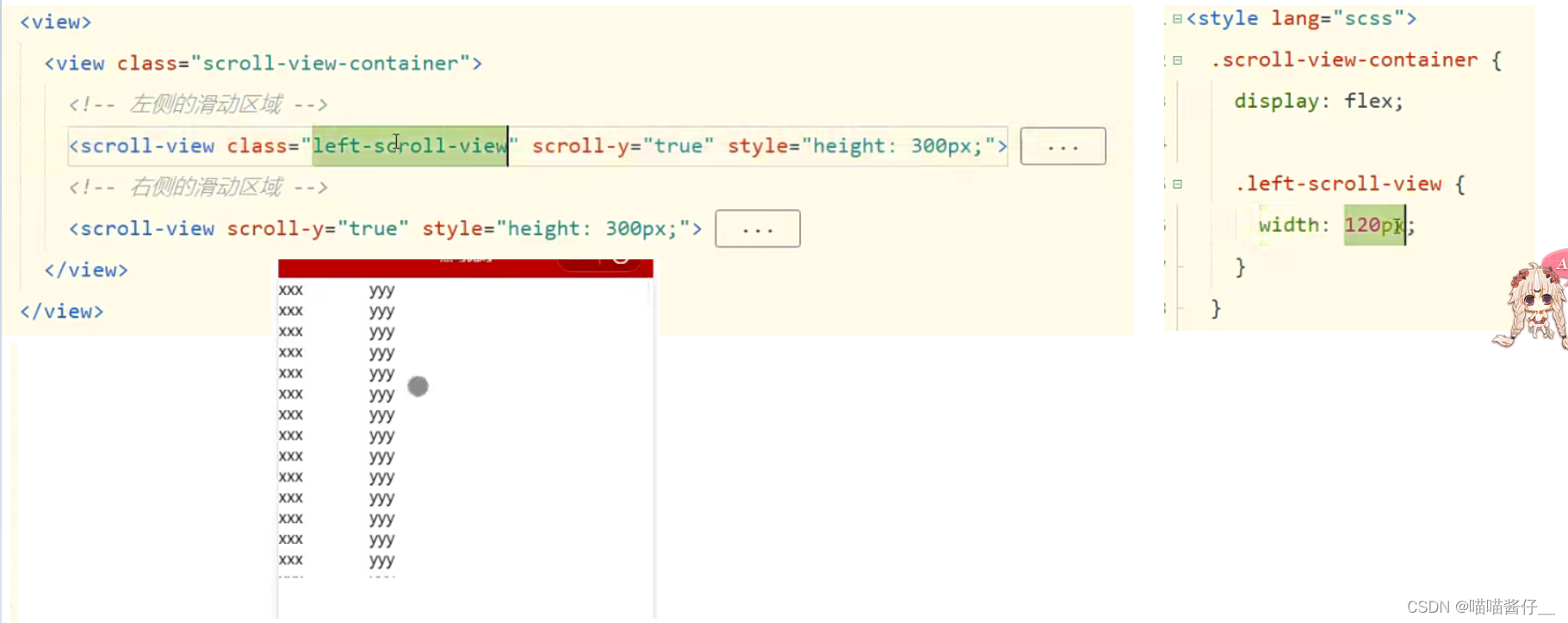
2 希望他占满整个高度 ,我们量出从头部到tabBar的距离 手动量取高度不合适,你换别的机型高度就不一样。 使用api
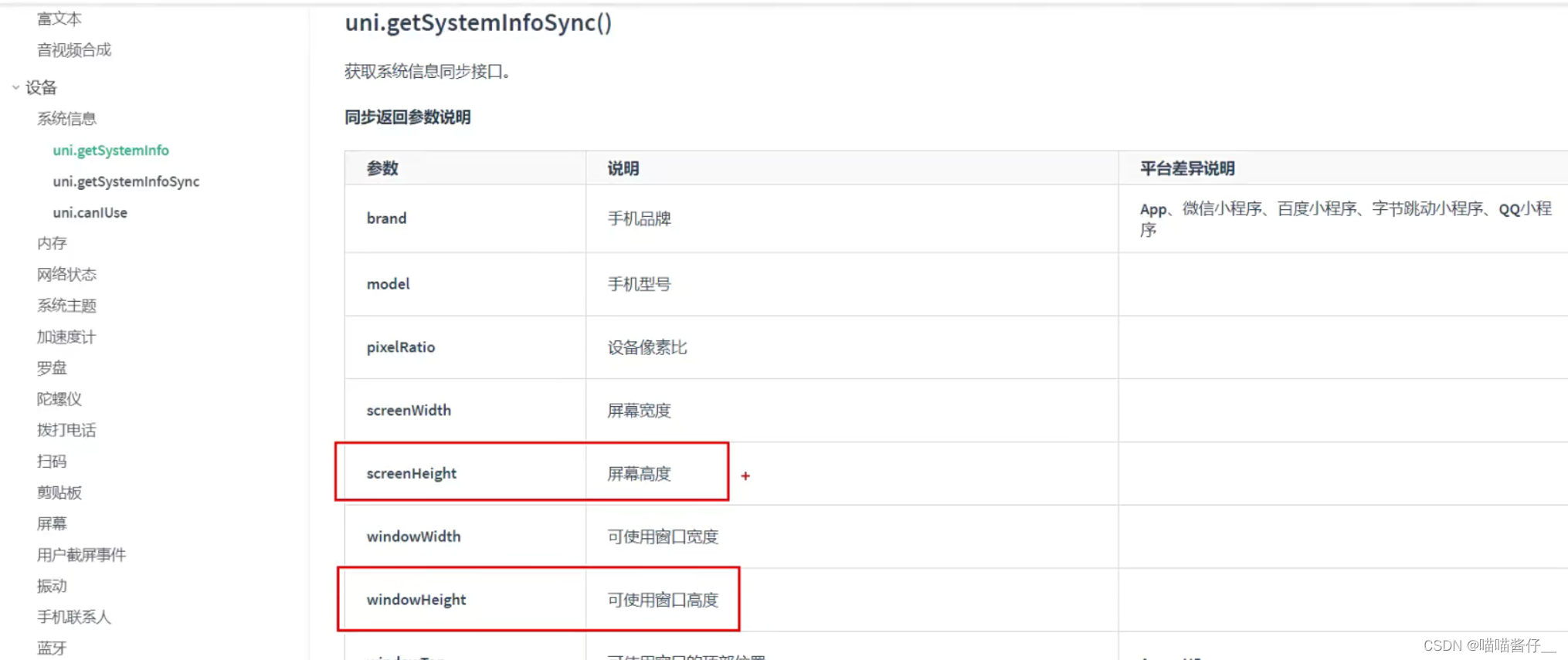
窗口的可用高度 = 屏幕高度 - navigationBar高度 - tabBar 高度
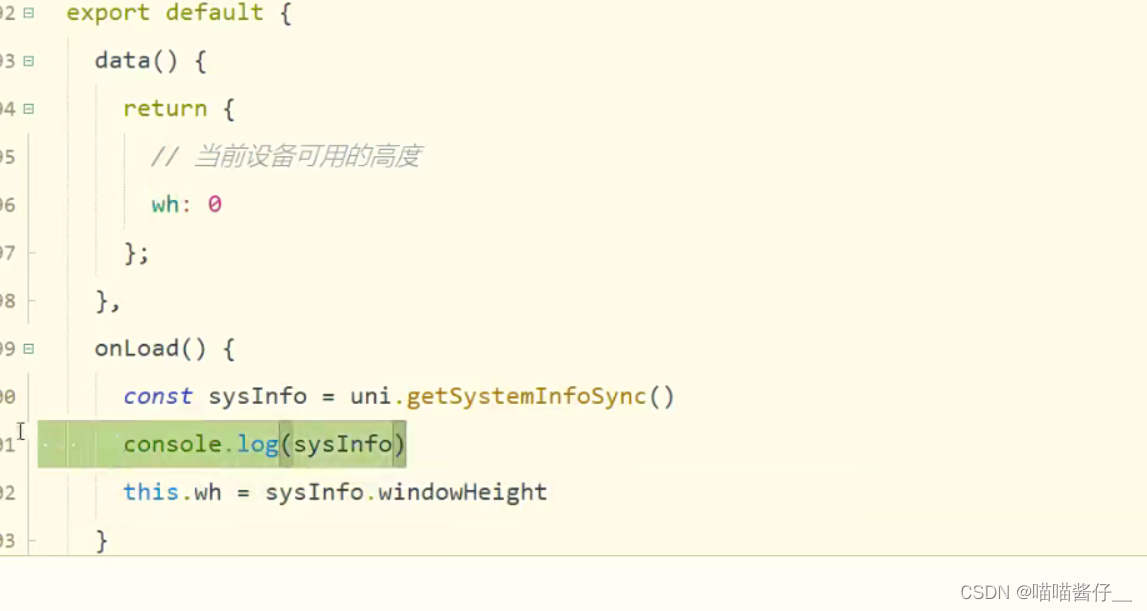
将页面的高度换成动态绑定:

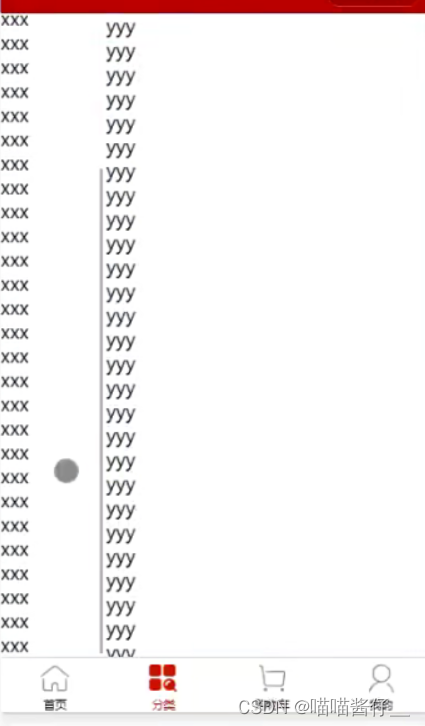
<template>
<view>
<view class="scroll-view-container">
<!-- 左侧的滚动视图区域 -->
<scroll-view class="left-scroll-view" scroll-y :style="{height: wh + 'px'}">
<view class="left-scroll-view-item active">xxx</view>
<view class="left-scroll-view-item">xxx</view>
<view class="left-scroll-view-item">xxx</view>
<view class="left-scroll-view-item">xxx</view>
<view class="left-scroll-view-item">xxx</view>
<view class="left-scroll-view-item">多复制一些节点,演示纵向滚动效果...</view>
</scroll-view>
<!-- 右侧的滚动视图区域 -->
<scroll-view class="right-scroll-view" scroll-y :style="{height: wh + 'px'}">
<view class="left-scroll-view-item">zzz</view>
<view class="left-scroll-view-item">zzz</view>
<view class="left-scroll-view-item">zzz</view>
<view class="left-scroll-view-item">zzz</view>
<view class="left-scroll-view-item">多复制一些节点,演示纵向滚动效果</view>
</scroll-view>
</view>
</view>
</template>
<script>
export default {
data() {
return {
// 窗口的可用高度 = 屏幕高度 - navigationBar高度 - tabBar 高度
wh: 0
};
},
onLoad() {
// 获取当前系统的信息
const sysInfo = uni.getSystemInfoSync()
// 为 wh 窗口可用高度动态赋值
this.wh = sysInfo.windowHeight-50
}
}
</script>
3 样式
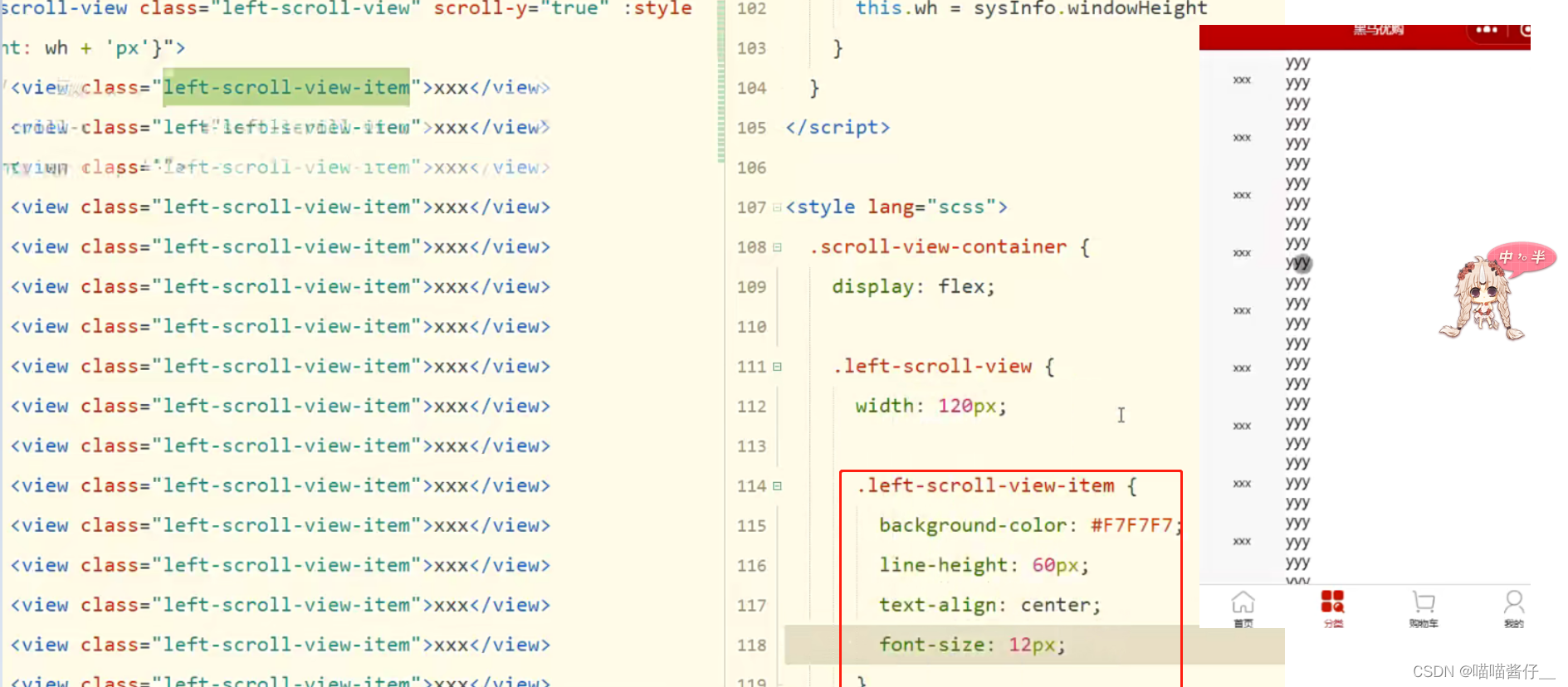
-
4 设置激活项:
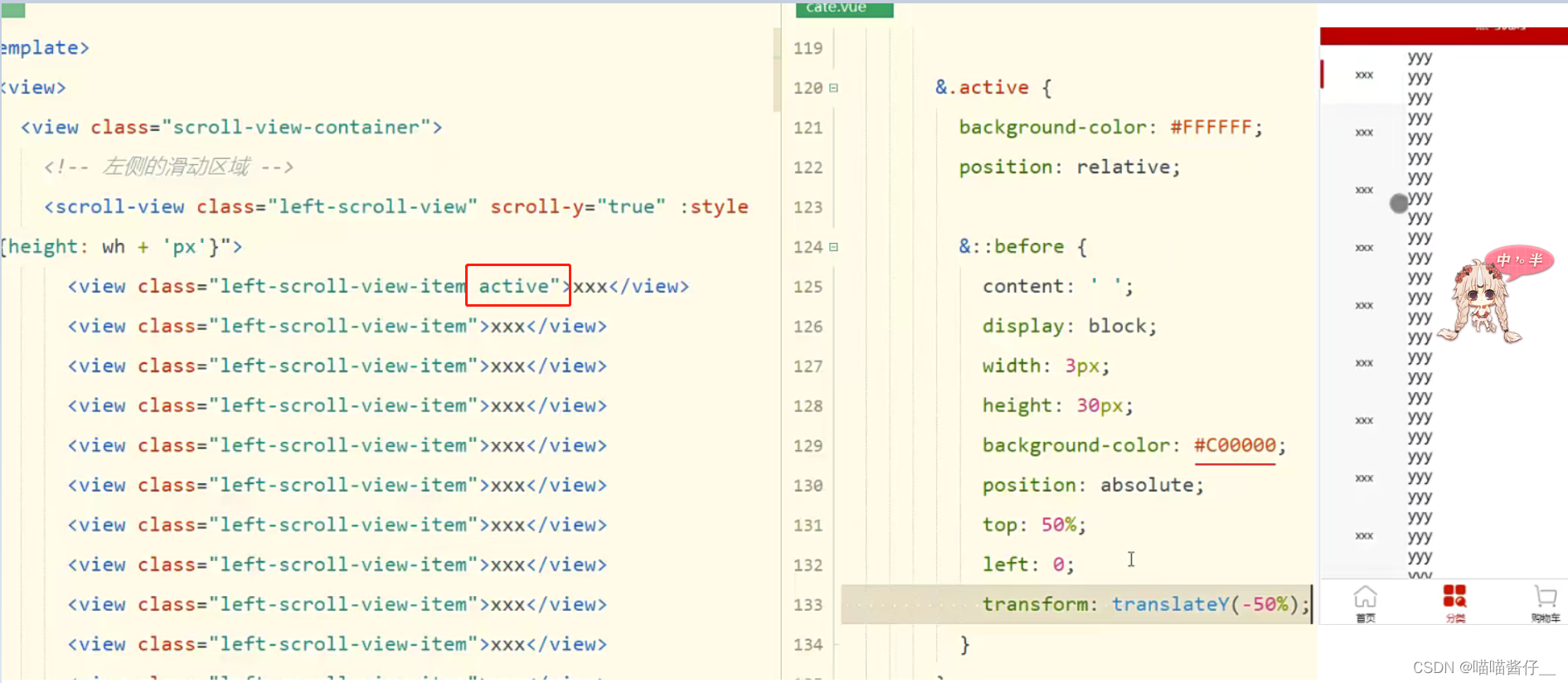
.scroll-view-container {
display: flex;
.left-scroll-view {
width: 120px;
.left-scroll-view-item {
line-height: 60px;
background-color: #f7f7f7;
text-align: center;
font-size: 12px;
// 激活项的样式
&.active {
background-color: #ffffff;
position: relative;
// 渲染激活项左侧的红色指示边线
&::before {
content: ' ';
display: block;
width: 3px;
height: 30px;
background-color: #c00000;
position: absolute;
left: 0;
top: 50%;
transform: translateY(-50%);
}
}
}
}
}
#4.2 获取分类数据
-
在 data 中定义分类数据节点:
data() { return { // 分类数据列表 cateList: [] } } -
调用获取分类列表数据的方法:
onLoad() { // 调用获取分类列表数据的方法 this.getCateList() } -
定义获取分类列表数据的方法:
methods: { async getCateList() { // 发起请求 const { data: res } = await uni.$http.get('/api/public/v1/categories') // 判断是否获取失败 if (res.meta.status !== 200) return uni.$showMsg() // 转存数据 this.cateList = res.message } }
#4.3 动态渲染左侧的一级分类列表
-
循环渲染列表结构:
<!-- 左侧的滚动视图区域 --> <scroll-view class="left-scroll-view" scroll-y :style="{height: wh + 'px'}"> <block v-for="(item, i) in cateList" :key="i"> <view class="left-scroll-view-item">{{item.cat_name}}</view> </block> </scroll-view> -
在 data 中定义默认选中项的索引:
data() { return { // 当前选中项的索引,默认让第一项被选中 active: 0 } } -
循环渲染结构时,为选中项动态添加
.active类名:每一个都有left-scroll-view-item,active是按需添加: 只有选的第几项,给第几项添加active
<block v-for="(item, i) in cateList" :key="i"> <view :class="['left-scroll-view-item', i === active ? 'active' : '']">{{item.cat_name}}</view> </block> -
为一级分类的 Item 项绑定点击事件处理函数
activeChanged:<block v-for="(item, i) in cateList" :key="i"> <view :class="['left-scroll-view-item', i === active ? 'active' : '']" @click="activeChanged(i)">{{item.cat_name}}</view> </block> -
定义
activeChanged事件处理函数,动态修改选中项的索引:methods: { // 选中项改变的事件处理函数 activeChanged(i) { this.active = i } }
索引变化,就会重新渲染
#4.4 动态渲染右侧的二级分类列表
查询一级分类时候,已经吧二级分类也返回来了
-
在
data中定义二级分类列表的数据节点:data() { return { // 二级分类列表 cateLevel2: [] } } -
修改
getCateList方法,在请求到数据之后,为二级分类列表数据赋值:async getCateList() { const { data: res } = await uni.$http.get('/api/public/v1/categories') if (res.meta.status !== 200) return uni.$showMsg() this.cateList = res.message // 为二级分类赋值 this.cateLevel2 = res.message[0].children } -
修改
activeChanged方法,在一级分类选中项改变之后,为二级分类列表数据重新赋值:activeChanged(i) { this.active = i // 为二级分类列表重新赋值 this.cateLevel2 = this.cateList[i].children } -
循环渲染右侧二级分类列表的 UI 结构:
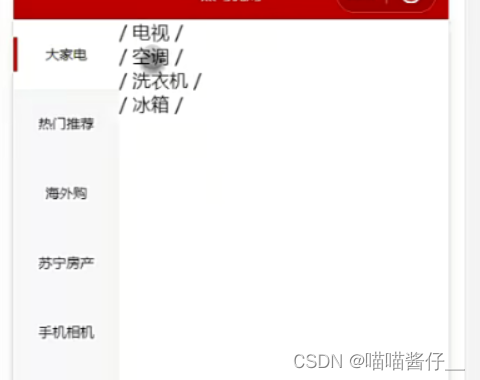
<!-- 右侧的滚动视图区域 --> <scroll-view class="right-scroll-view" scroll-y :style="{height: wh + 'px'}"> <view class="cate-lv2" v-for="(item2, i2) in cateLevel2" :key="i2"> <view class="cate-lv2-title">/ {{item2.cat_name}} /</view> </view> </scroll-view> -
美化二级分类的标题样式:
.cate-lv2-title { font-size: 12px; font-weight: bold; text-align: center; padding: 15px 0; }
#4.5 动态渲染右侧的三级分类列表
-
在二级分类的
<view>组件中,循环渲染三级分类的列表结构: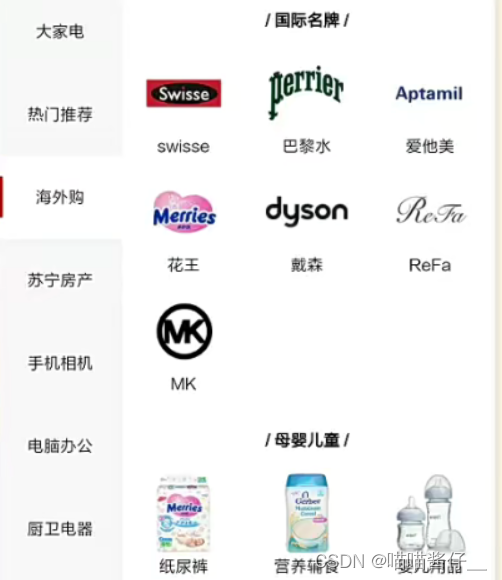
<!-- 右侧的滚动视图区域 --> <scroll-view class="right-scroll-view" scroll-y :style="{height: wh + 'px'}"> <view class="cate-lv2" v-for="(item2, i2) in cateLevel2" :key="i2"> <view class="cate-lv2-title">/ {{item2.cat_name}} /</view> <!-- 动态渲染三级分类的列表数据 --> <view class="cate-lv3-list"> <!-- 三级分类 Item 项 --> <view class="cate-lv3-item" v-for="(item3, i3) in item2.children" :key="i3"> <!-- 图片 --> <image :src="item3.cat_icon"></image> <!-- 文本 --> <text>{{item3.cat_name}}</text> </view> </view> </view> </scroll-view> -
美化三级分类的样式:
.cate-lv3-list { display: flex; flex-wrap: wrap; .cate-lv3-item { width: 33.33%; margin-bottom: 10px; display: flex; flex-direction: column; align-items: center; image { width: 60px; height: 60px; } text { font-size: 12px; } } }
宽度33%
#4.6 切换一级分类后重置滚动条的位置
-
在 data 中定义
滚动条距离顶部的距离:data() { return { // 滚动条距离顶部的距离 scrollTop: 0 } } -
动态为右侧的
<scroll-view>组件绑定scroll-top属性的值:<!-- 右侧的滚动视图区域 --> <scroll-view class="right-scroll-view" scroll-y :style="{height: wh + 'px'}" :scroll-top="scrollTop"></scroll-view> -
切换一级分类时,动态设置
scrollTop的值:// 选中项改变的事件处理函数 activeChanged(i) { this.active = i this.cateLevel2 = this.cateList[i].children // 让 scrollTop 的值在 0 与 1 之间切换 this.scrollTop = this.scrollTop === 0 ? 1 : 0 // 可以简化为如下的代码: // this.scrollTop = this.scrollTop ? 0 : 1 }
#4.7 点击三级分类跳转到商品列表页面
-
为三级分类的 Item 项绑定点击事件处理函数如下:
<view class="cate-lv3-item" v-for="(item3, i3) in item2.children" :key="i3" @click="gotoGoodsList(item3)"> <image :src="item3.cat_icon"></image> <text>{{item3.cat_name}}</text> </view> -
定义事件处理函数如下:
// 点击三级分类项跳转到商品列表页面 gotoGoodsList(item3) { uni.navigateTo({ url: '/subpkg/goods_list/goods_list?cid=' + item3.cat_id }) }
#4.8 分支的合并与提交
-
将
cate分支进行本地提交:git add . git commit -m "完成了分类页面的开发" -
将本地的
cate分支推送到码云:git push -u origin cate -
将本地
cate分支中的代码合并到master分支:git checkout master git merge cate git push -
删除本地的
cate分支:git branch -d cate





















 1963
1963











 被折叠的 条评论
为什么被折叠?
被折叠的 条评论
为什么被折叠?








